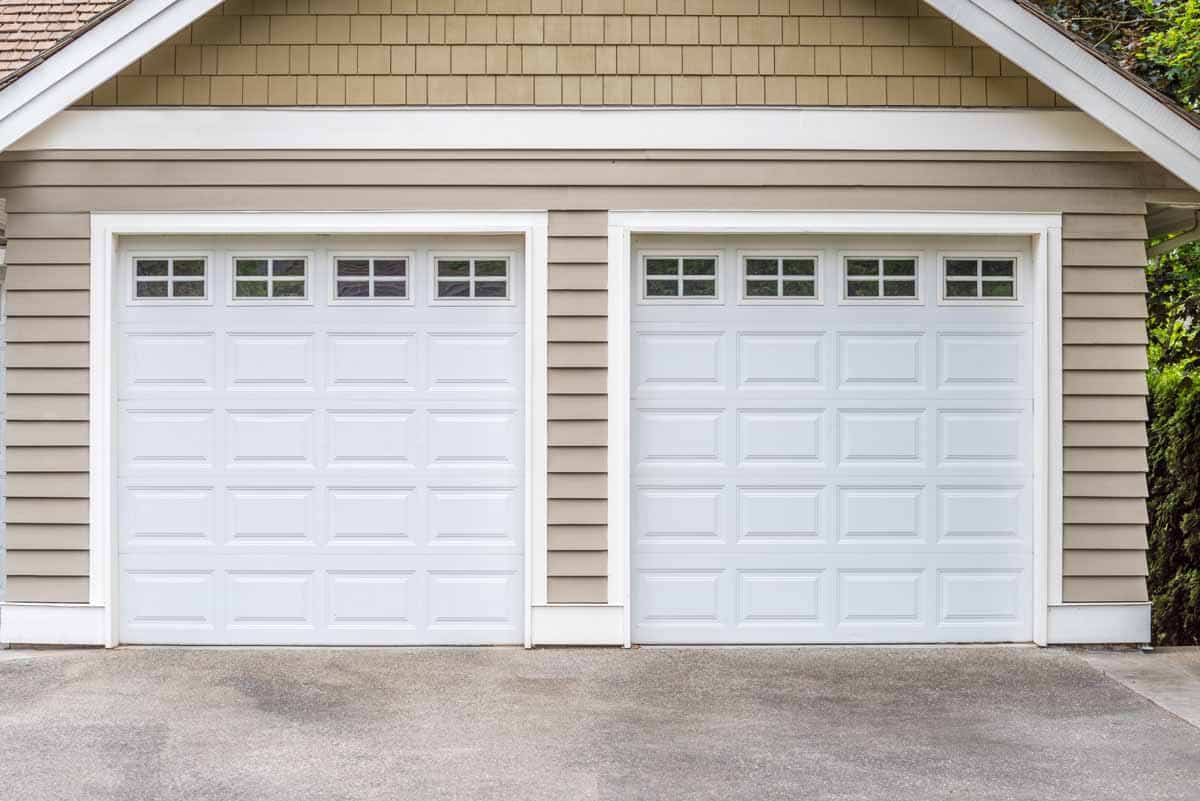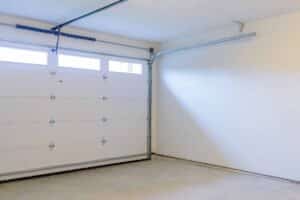Topics Covered:
If you have kids (or grandkids) running around, you know that the list of potential household hazards can feel endless. One area often overlooked in childproofing is the garage door. Many of us rely on our garage doors daily, but few people realize just how powerful and potentially dangerous they can be if used improperly—especially by curious little ones.
In this article, we’ll share practical tips for keeping kids safe around the garage door. From teaching them good habits to installing extra safety features, these steps will help protect your family and give you peace of mind. Let’s dive in!
Why Garage Door Safety Matters
The modern garage door is heavy—some can weigh over 200 pounds—and is operated by a powerful motor and tensioned springs. If a child is playing near the door when it’s moving, or if they accidentally trigger it without supervision, there’s a risk of serious injury. Even smaller mishaps, like fingers caught between door panels, can be painful and scary.
Fortunately, garage door technology has evolved to include critical safety features like auto-reverse sensors and photoelectric eyes. But those systems only work if they’re well-maintained—and if children understand they’re not to be treated as toys. Taking a few childproofing steps now can prevent mishaps down the line.
1. Educate Your Children About Garage Door Dangers
Kids are naturally curious. The first step to keeping them safe is helping them understand why the garage door isn’t something to play with:
- Explain how heavy the door is. Show them the door panels and let them know it can hurt them if they’re underneath when it closes.
- Teach them to stay clear when it’s moving. Make a rule: if the door is opening or closing, they should stand well back until it’s finished.
- Discourage door “rides.” Some kids get the idea to grab onto a lifting door—this is extremely dangerous.
- Show them the emergency release cord. Older kids can learn that this cord is for emergencies only, not for playing around.
Keep the conversation simple and age-appropriate, but don’t shy away from emphasizing the potential consequences. If kids understand the “why” behind the rules, they’re more likely to follow them.
2. Keep Remote Controls and Wall Switches Out of Reach
A garage door remote is basically a “key” to a large, powerful moving mechanism. One of the easiest childproofing moves is to make sure they can’t accidentally activate the door:
- Store remotes up high: Keep them in the car’s glove compartment or a secure spot, not loose in the car seat where a curious toddler might press the button.
- Install wall switches at least five feet off the ground: If your switch is too low, consider moving it higher so little hands can’t reach.
- Use “lock” features on modern openers: Some garage door openers allow you to “lock” the controls, preventing the door from opening via remotes or wall switches until unlocked.
This simple step is often overlooked—many of us place the remote by the garage entrance or toss it on a low shelf. But ensuring it’s out of reach can stop accidental openings (or curious button presses) from happening in the first place.
3. Regularly Test and Maintain Safety Sensors
Modern garage doors include photoelectric sensors (a.k.a. “photo eyes”) near the floor on each side of the track. These sensors detect obstacles—like a child, pet, or toy—in the door’s path and trigger the door to reverse instead of closing. However, these sensors must be clean, aligned, and undamaged to work effectively.
- Clean the sensors: Gently wipe away dust or cobwebs with a soft, dry cloth. Here in Raleigh, spring pollen can quickly accumulate on small surfaces.
- Check alignment: If the sensors get knocked out of place, they may not “see” each other. A quick visual check can confirm they’re pointing at each other.
- Test regularly: Once a month, place an object (like a cardboard box) in the door’s path. Close the door; if it doesn’t reverse, that’s a major red flag. Contact a professional to fix it ASAP.
Additionally, auto-reverse force settings ensure the door reopens if it encounters resistance while closing. A professional garage door tune-up can confirm these settings are correct—an especially good idea if you have young kids at home.
4. Teach the “Hands-Off” Rule
Garage doors have multiple pinch points where tiny fingers can get trapped—between panels, in hinges, or along the tracks. If a child touches a moving door, the results could be a painful pinch or worse. Set a clear family rule that the door is strictly hands-off, especially when in motion. A few ways to reinforce this:
- Lead by example: Don’t touch the door yourself while it’s moving, and avoid placing hands near hinges or joints.
- Use positive reinforcement: Praise kids when they remember to stay away from the door on their own.
- Explain pinch points: For school-age kids, point out the areas that can catch fingers. A quick demonstration can help them see why it’s unsafe.
Consider placing a simple reminder sticker or sign at kid-height inside the garage—especially near the door handle or wall switch—just to hammer home the message.
5. Install a Keyless Entry Pad (with Caution)
Keyless entry pads can be handy, letting older kids or trusted neighbors open the garage without a physical remote. But it’s crucial to do this properly if you have young children:
- Place the keypad high enough: Mount it so younger kids can’t fiddle with the buttons.
- Use a complex code: Avoid simple sequences like 1-2-3-4, which kids might guess.
- Teach older kids responsible use: Emphasize that the code should not be shared with friends or anyone outside the family.
If you’re worried about code breaches, opt for a keypad system that allows you to change codes frequently or grants temporary access for babysitters or relatives. This added layer of control is especially helpful if you have multiple people needing entry, but still want to limit access for younger children.
6. Keep the Area Around the Door Clear
Kids often turn the garage into a makeshift play area, especially if there’s extra space. While it’s okay for them to play in the garage, designate areas away from the door’s path. Here’s how:
- Store bikes, toys, or sports gear far from the tracks: Items can roll or fall into the door’s path if stored too close.
- Mark a “safe zone”: Consider taping a bright-colored line on the garage floor a few feet from the door. Instruct kids that they must stay behind this line when the door is opening or closing.
- Secure cords and cables: Garage door opener cords, extension cords, or clutter can trip kids running around.
In addition to safety, keeping the door area clear reduces the chance of damaging your belongings or the door itself if something gets stuck underneath.
7. Enable Vacation Lock or App Notifications
Many modern garage door openers offer security modes like “Vacation Lock,” which disables remote controls for your door when you’re away. This can be a game-changer if you’ll be out of town or simply want extra peace of mind at night. If you have a smart garage door opener with an accompanying app, you can also set up notifications for:
- Door openings or closings
- Failed attempts (e.g., if a child tries to enter the wrong code)
- Door left open for too long
These features help you keep tabs on the door’s status—and can alert you if your little ones start experimenting with the keypad or remotes when they shouldn’t be.
8. Keep Springs and Cables Off-Limits
Garage door springs and cables are under high tension. A snapped cable or spring can whip around and cause severe injury. While a child likely won’t intentionally tamper with these components, be mindful of:
- Loose or dangling cables: If you ever see a cable sagging, contact a professional immediately—do not let kids play in the garage until it’s fixed.
- Exposed spring ends: Some older doors lack protective covers. If children could reach springs, consider installing a safety cover.
- Semi-annual inspections: At RJ Garage Door Services, we recommend regular check-ups to ensure springs and cables remain in good condition, especially if you have kids around.
Again, emphasize the importance of staying away from the door’s upper corners or side rails where springs and cables are located.
9. Close the Door When Not in Use
It might seem obvious, but closing your garage door when nobody’s actively coming or going is a simple safety measure. An open garage door is an open invitation for kids to wander in and explore without supervision. Additionally, an open door can lure in stray animals or opportunistic thieves.
If your family tends to be in and out of the garage, consider installing an automatic timer on your door. This feature closes the door after a preset time (e.g., 10 minutes), ensuring it never stays open indefinitely by accident.
10. Know When to Call a Professional
Despite your best efforts at childproofing, sometimes doors develop problems—like misaligned tracks, failing openers, or broken springs—that require professional attention. Don’t attempt a DIY fix on high-tension components if you suspect they’re damaged. Instead:
- Contact a qualified garage door technician (like our team at RJ Garage Door Services) to diagnose and fix the issue safely.
- Keep kids away from the garage until the repair is complete, especially if there’s a structural issue that could cause sudden door failure.
- Schedule routine tune-ups (annually or semi-annually) to catch wear and tear before it leads to a safety hazard.
Remember, a malfunctioning door is an immediate red flag, especially with young children around who might not recognize the signs of a door on the brink of failure.
Additional Tips and Reminders
Here are a few more pointers to help maintain a safe garage environment for kids:
- Keep emergency release cords short: Some doors have long cords that dangle low enough for a child to grab. Trim or tie them to a shorter length so they’re still accessible for adults but out of reach for little hands.
- Never race under a moving door: Show kids why it’s dangerous to try to “beat” the door as it closes. The auto-reverse is a backup, not an invitation to test it!
- Lock any connecting doors: If you have a door from the garage into the house, keep it locked or install a childproof knob if toddlers are around. This prevents them from wandering into the garage unsupervised.
Also, consider storing hazardous materials (e.g., lawn chemicals, paint cans) in locked cabinets or on high shelves, well out of reach. A child-safe garage door is great, but a fully childproof garage also accounts for other potential hazards.
Wrapping Up: Peace of Mind for Busy Families
As parents, we can’t watch our kids every second of the day—but we can set up our homes to be as safe as possible. Your garage door, while essential to daily life, also has the potential to cause serious harm if overlooked in your childproofing efforts. By teaching kids basic rules, positioning remotes and keypads out of reach, and regularly testing (and maintaining) safety features like sensors and auto-reverse, you’re taking practical, effective steps to protect them.
And remember, if you ever suspect a mechanical issue—such as odd noises, jerky movements, or damaged cables—don’t delay in contacting a professional. At RJ Garage Door Services, we’re committed to ensuring Raleigh families enjoy fully functioning, safe garage doors. A quick tune-up or repair can make all the difference in preventing accidents and extending the life of your door.




